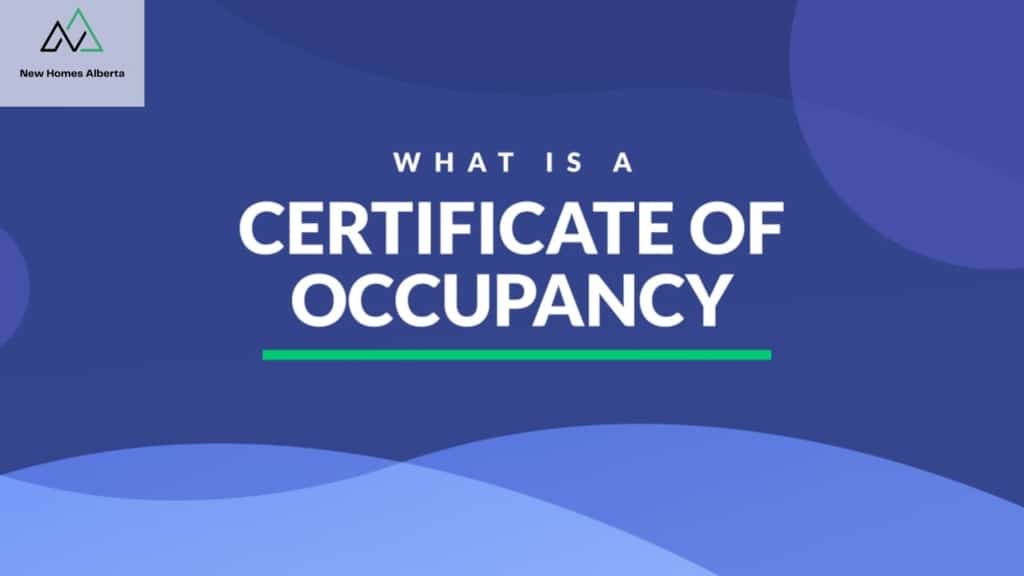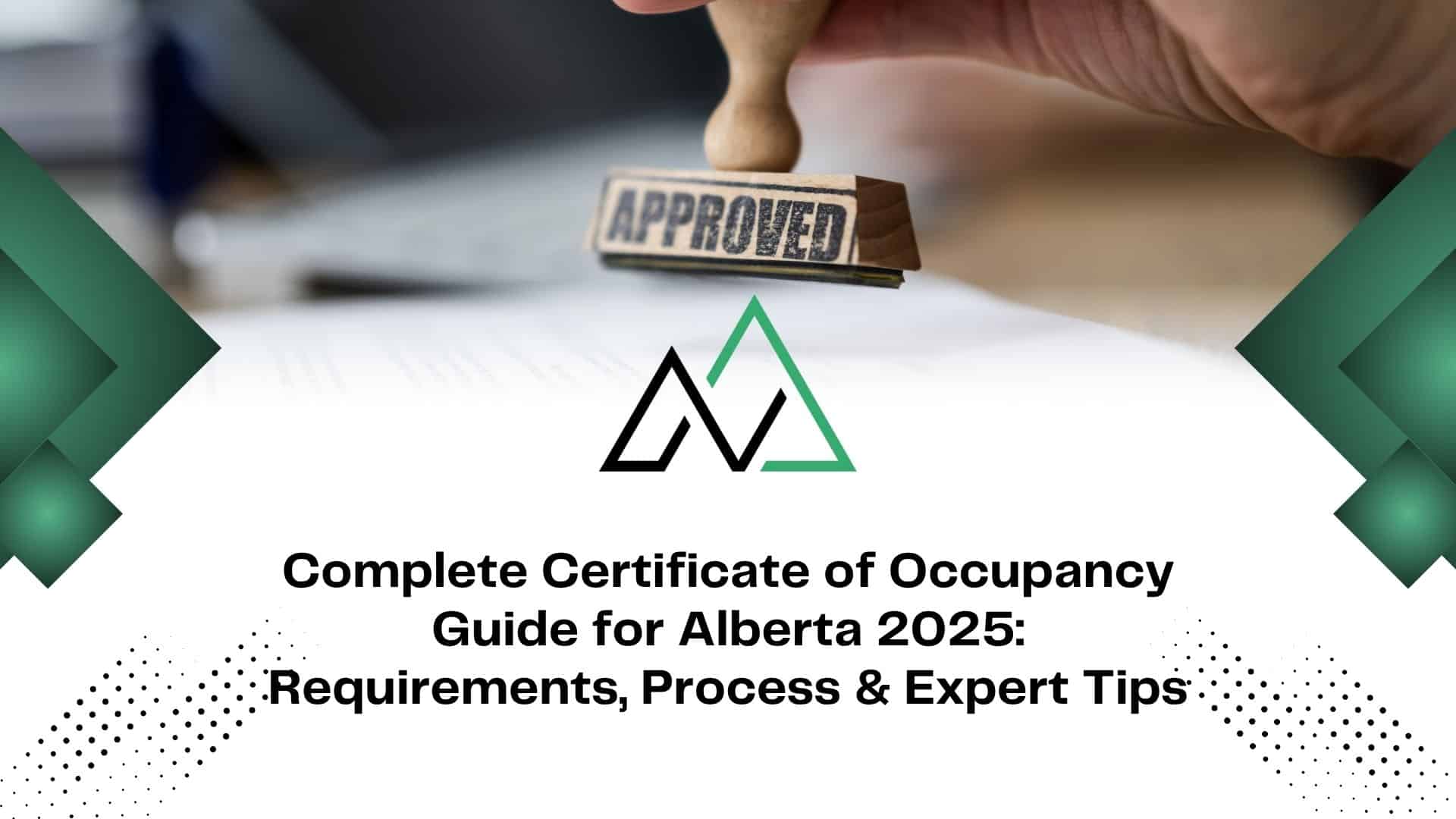What is a Certificate of Occupancy?

A certificate of occupancy is an official document issued by local municipalities in Alberta that confirms a building or structure meets all applicable building codes, zoning requirements, and safety standards before occupancy. As of June 2025, Alberta municipalities issued over 45,000 certificates of occupancy annually, with processing times averaging 5-10 business days. This critical document legally authorizes the intended use of residential, commercial, or industrial properties and is required before anyone can legally occupy a new or substantially renovated building.
What is the Current Certificate of Occupancy Market Like?
Alberta’s certificate of occupancy processing has become increasingly streamlined through digital platforms, with most municipalities now offering online applications and tracking systems that reduce approval times by 30% compared to traditional paper processes.
| Key Market Metrics | 2025 Data | 2024 Comparison |
| Average Processing Time | 5-10 business days | 7-14 business days |
| Digital Applications | 85% of municipalities | 65% of municipalities |
| Approval Rate | 94.2% | 92.8% |
| Average Cost Range | $150-$500 | $125-$450 |
| Inspection Requirements | 2-4 inspections | 2-4 inspections |
| Appeals Filed | 2.1% of applications | 2.8% of applications |
| Same-Day Processing | Available in 12 cities | Available in 8 cities |
Understanding Alberta’s Certificate of Occupancy Requirements

New Construction Certificate Requirements
New residential construction in Alberta requires comprehensive inspection and documentation before receiving a certificate of occupancy. According to the Alberta Municipal Affairs department, all new homes must undergo multiple inspection phases including foundation, framing, mechanical systems, and final inspections.
The process typically involves coordination between builders, licensed home inspectors, and municipal building departments. Major cities like Calgary and Edmonton have implemented digital tracking systems that allow real-time monitoring of inspection progress and application status.
Renovations and Additions Requiring Certificates
Substantial renovations affecting more than 30% of a building’s structure or changing its intended use require new certificates of occupancy. This includes basement conversions, home additions exceeding 300 square feet, and any modifications to load-bearing walls or mechanical systems.
The Real Estate Council of Alberta (RECA) emphasizes that homeowners must obtain proper permits before beginning substantial renovations to avoid legal complications during future property sales.
Commercial and Multi-Unit Requirements
Commercial properties and multi-unit residential buildings face more stringent requirements under Alberta’s building codes. These structures must meet enhanced fire safety standards, accessibility requirements under the Alberta Building Code, and specialized mechanical system inspections.
Properties in Calgary’s downtown core, Edmonton’s business districts, and major commercial areas like West Edmonton Mall vicinity require additional safety certifications and ongoing compliance monitoring.
Change of Use Applications
Converting residential properties to commercial use or vice versa requires new certificates of occupancy reflecting the intended use change. This process involves zoning compliance verification, parking requirement assessments, and updated utility capacity evaluations.
The City of Calgary has streamlined their change-of-use application process, offering expedited review for certain property types in designated development areas.
Temporary Occupancy Certificates
Temporary certificates allow limited occupancy during final construction phases, typically issued for 90-180 day periods. These are commonly used for phased construction projects, seasonal businesses, or properties awaiting final utility connections.
Municipalities like Red Deer and Lethbridge have specific protocols for temporary certificates, ensuring safety while accommodating construction timelines.
How to Obtain a Certificate of Occupancy in Alberta: Step-by-Step Guide
Step 1: Verify Municipal Requirements
Contact your local municipality’s building department to confirm specific requirements for your property type and location. Each city has unique forms, fees, and processing procedures that must be followed exactly.
Step 2: Complete Required Inspections
Schedule and pass all mandatory inspections including electrical, plumbing, HVAC, and structural assessments. Most municipalities require 48-72 hours notice for inspection scheduling.
Step 3: Submit Application and Documentation
File your certificate of occupancy application with required supporting documents including construction permits, inspection reports, and compliance certificates from licensed professionals.
Step 4: Pay Required Fees
Submit payment for application processing fees, which vary by municipality and property type. Most cities accept online payments through secure portals.
Step 5: Await Processing and Review
Municipal staff review applications for completeness and compliance. This typically takes 5-10 business days but can extend during peak construction seasons.
Step 6: Address Any Deficiencies
Respond promptly to any requests for additional information or corrections. Quick responses prevent processing delays and expedite approval.
Step 7: Receive Your Certificate
Once approved, certificates are issued electronically or by mail. Keep copies for your records and provide copies to lenders, insurers, and real estate professionals as needed.
Step 8: Maintain Compliance Records
Retain all documentation related to your certificate of occupancy for future reference, property sales, or renewal requirements.
Official Alberta Resources and Regulations
The Alberta government provides comprehensive oversight of building codes and occupancy standards through multiple departments and agencies. According to Alberta’s Land Titles system, certificates of occupancy create official records that affect property titles and legal ownership rights.
The Spatial Planning Information Network (SPIN) maintains digital records of all building permits and certificates issued across Alberta municipalities. Property owners can access historical certificate information through Alberta Land Titles for due diligence purposes.
Alberta’s Municipal Property Assessment department uses certificate of occupancy data to determine property classifications and tax assessments. This information directly impacts annual property tax calculations and assessment appeals.
Major municipalities maintain specific certificate requirements:
The City of Calgary offers comprehensive online services for certificate applications, with specialized processes for different property types. Their development permit search system allows public access to certificate status information.
Edmonton’s residential assessment department coordinates certificate requirements with property tax assessments. The city’s streamlined process reduces processing times for standard residential applications.
Red Deer’s municipal planning commission oversees certificate issuance for complex developments and commercial projects requiring special consideration.
The Regional Municipality of Wood Buffalo manages certificates for Fort McMurray’s unique industrial and residential developments, with specialized requirements for oil sands region construction.
Frequently Asked Questions About Certificate of Occupancy
What happens if I occupy a building without a certificate?
Occupying a building without a proper certificate of occupancy violates municipal bylaws and can result in fines ranging from $500-$5,000, forced evacuation orders, and legal liability for safety incidents.
How long does a certificate of occupancy remain valid?
Most Alberta certificates remain valid indefinitely unless the building use changes or substantial renovations occur. However, some municipalities require renewal for certain commercial properties every 5-10 years.
Can I sell my property without a certificate of occupancy?
Legal property sales require valid certificates of occupancy. Missing certificates can delay closings, reduce property values, and create liability issues for both buyers and sellers.
What inspections are required before certificate issuance?
Standard inspections include electrical systems, plumbing, HVAC, structural elements, fire safety systems, and final occupancy assessments. Complex properties may require additional specialized inspections.
Who can apply for a certificate of occupancy?
Property owners, licensed contractors, or authorized representatives can apply for certificates. However, the property owner remains ultimately responsible for compliance and accuracy of all submitted information.
What documents are needed for the application?
Required documents typically include building permits, inspection reports, architectural plans, engineer certifications, contractor licenses, and proof of compliance with zoning requirements.
How much does a certificate of occupancy cost in Alberta?
Fees vary by municipality and property type, ranging from $150 for simple residential properties to $500+ for complex commercial buildings. Additional inspection fees may apply.
Can I appeal a denied certificate application?
Yes, most municipalities have formal appeal processes allowing applicants to contest denials. Appeals must typically be filed within 30 days of the denial notice.
What’s the difference between temporary and permanent certificates?
Temporary certificates allow limited occupancy during final construction phases, while permanent certificates authorize full occupancy after complete code compliance verification.
Do I need a new certificate for minor renovations?
Minor renovations like painting, flooring, or fixture replacements typically don’t require new certificates. However, any work affecting structural, electrical, or mechanical systems usually requires permit and certificate updates.

